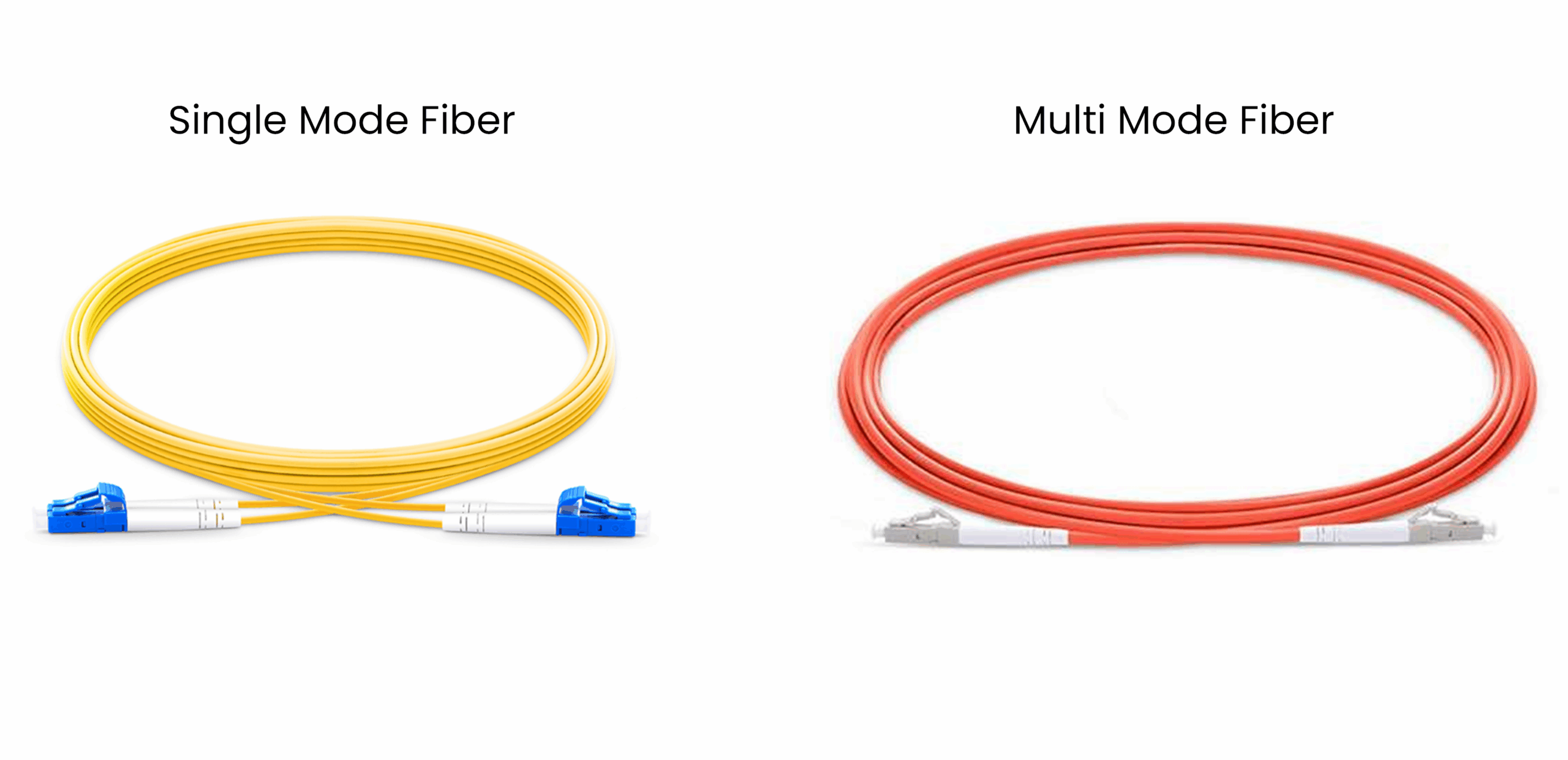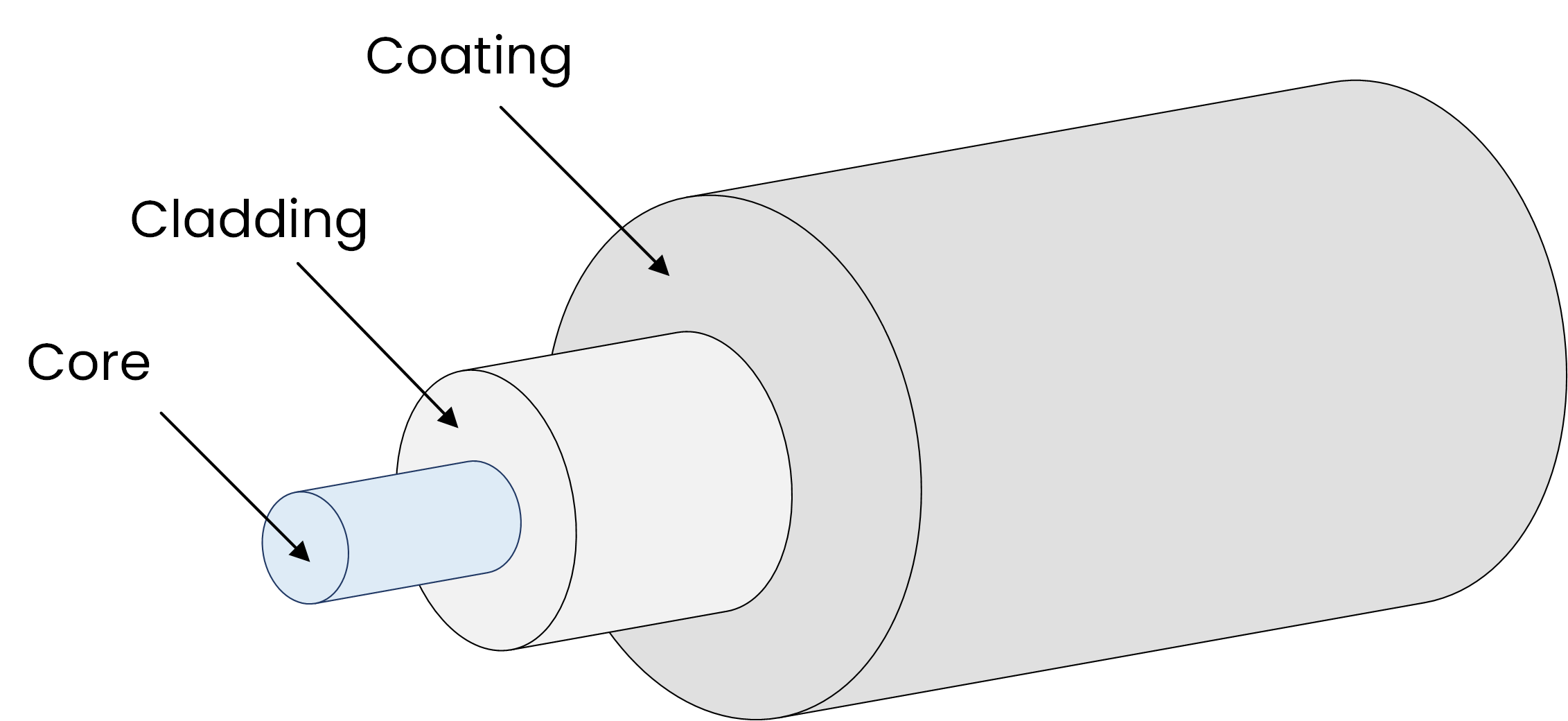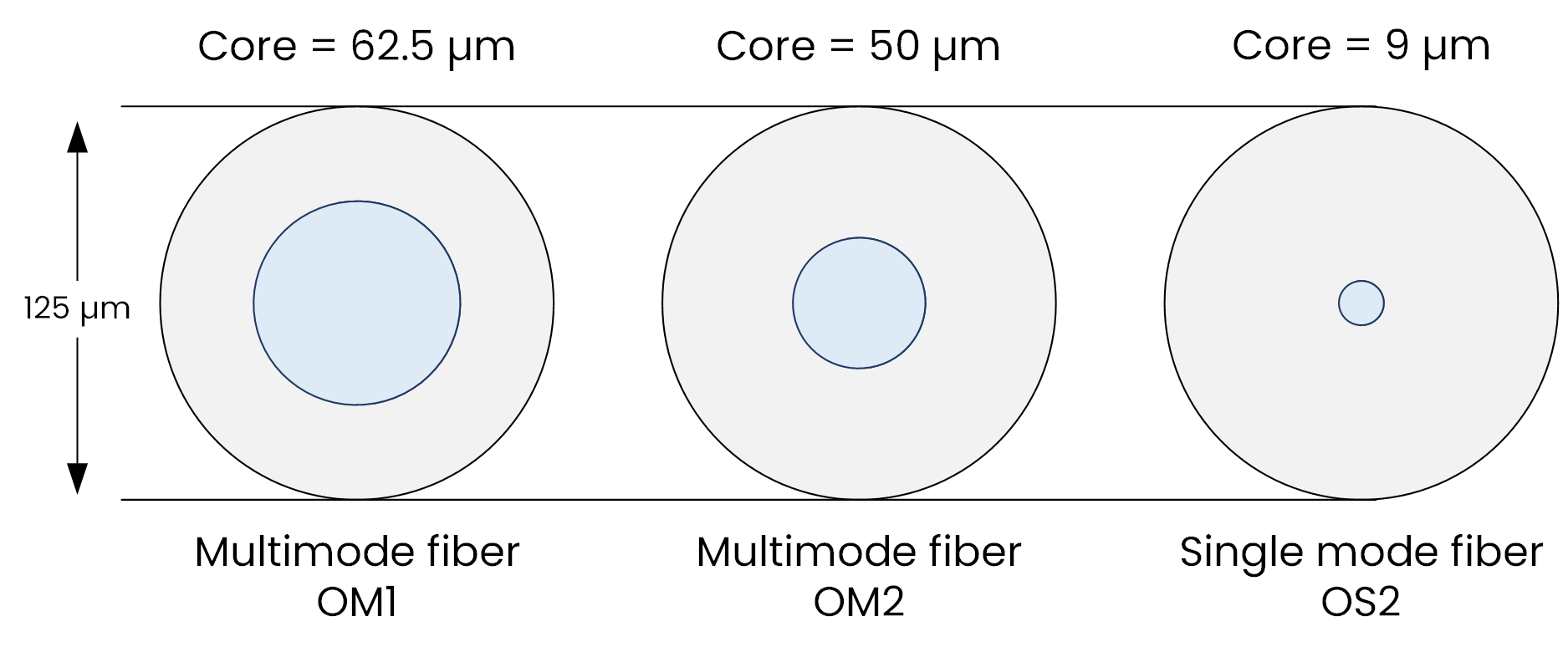Fiber optics are used in modern networks for high bandwidth and low latency in connections.
Fiber optics send information using light pulses, not electrical signals like copper cables. This allows for faster data transfer.
In this course, we will focus on the two main families of fiber optics:
Figure 1 - Single Mode vs Multi Mode Fiber
Single-Mode Fiber (SMF)
Multi-Mode Fiber (MMF)
The main difference between these two types lies in the core size, the light source, and the greatest supported distance.
Now that you know the two main families of fiber, let’s take a closer look at how a fiber optic cable is structured.Answer the question below
What do fiber optics use to send information?
To begin with, you need to understand that a fiber optic cable is made up of several parts.
As you can see below, there are three main layers.On the outside, there is the Coating. This is the protective layer that shields the fiber from shocks or humidity. (Additional layers such as buffer, strength members, or outer jacket may also be added for extra protection.)
Just below it is the Cladding. It surrounds the core and plays a crucial role: it keeps the light inside the core by reflecting it back through the phenomenon of refraction.
Finally, at the center, we have the Core. This is the part where the light actually travels and where information is transmitted.

Figure 2 – Optical fiber structure
The size of the core changes depending on the type of fiber optic cable.

Figure 3 – Core sizes comparison: OM1, OM2, OS2
In Single-Mode Fiber
OS1 / OS2 → about 9 µm
In Multi-Mode Fiber
OM1 → 62.5 µm
OM2, OM3, OM4, OM5 → 50 µm
These core sizes are important and should be memorized for the CCNA exam. Since the size of the core determines the fiber type, let’s now focus on single-mode fiber and see how it works.
Answer the question below
Which fiber has a very small core?
In Single-Mode Fiber, light transmission is achieved using a laser. This device is expensive, but very precise.
The light travels in a straight line through the fiber core, which makes it possible to carry information across very long distances.

Figure 4 – Light transmission in Single-Mode fiber
Light in single-mode fiber experiences minimal loss and almost no dispersion.
Ethernet Standards to Know
For the CCNA exam, you should be able to identify common single-mode Ethernet standards.
1000BASE-LX
“1000” = 1 Gb/s
“BASE” = baseband transmission
“LX” = Long-wavelength (~1310 nm)
Typical range: 5 to 10 km.
10GBASE-LR
“10G” = 10 Gb/s
“BASE” = baseband transmission
“LR” = Long Reach (~1310 nm)
Typical range: around 10 km.
LX and LR always refer to Single-mode fiber.
Single-Mode is great for long distances, as you can see, but what about shorter distances and cost-effective links? That’s where Multi-Mode fiber comes in.
40 % Complete: you’re making great progress
Unlock the rest of this lesson
If you’d like to continue your CCNA journey, simply create your free account.
Access all CCNA lessons
Practice with hands-on labs
Train with Practice exams and Quizzes
Progress tracking in your dashboard
Made by network engineers - CCNP certified
learners globally
Single Mode Vs Multi Mode Fiber
Not all fiber cables are the same, some travel kilometers, others just a few hundred meters. In this lesson, you’ll discover why Single-Mode and Multi-Mode make all the difference.